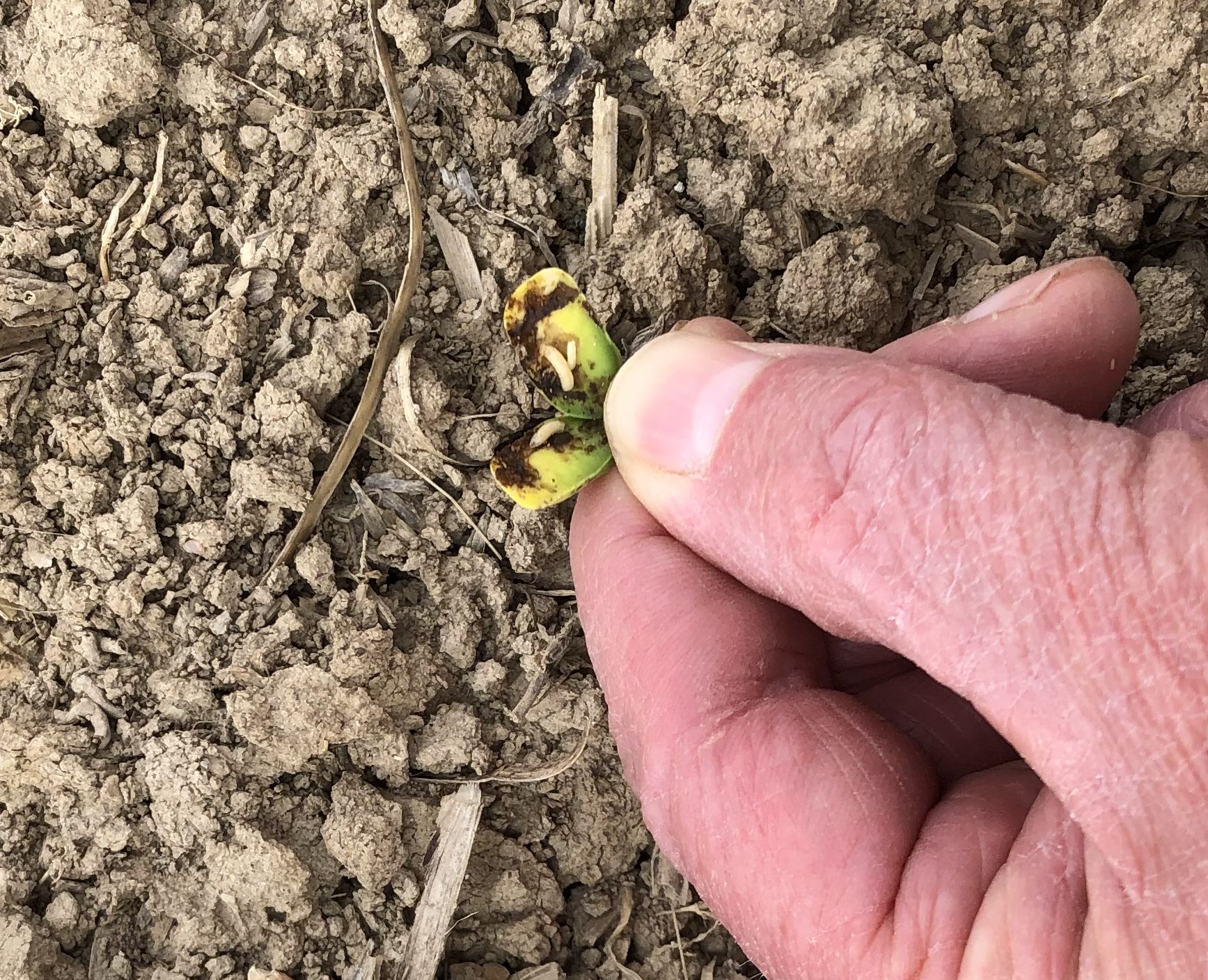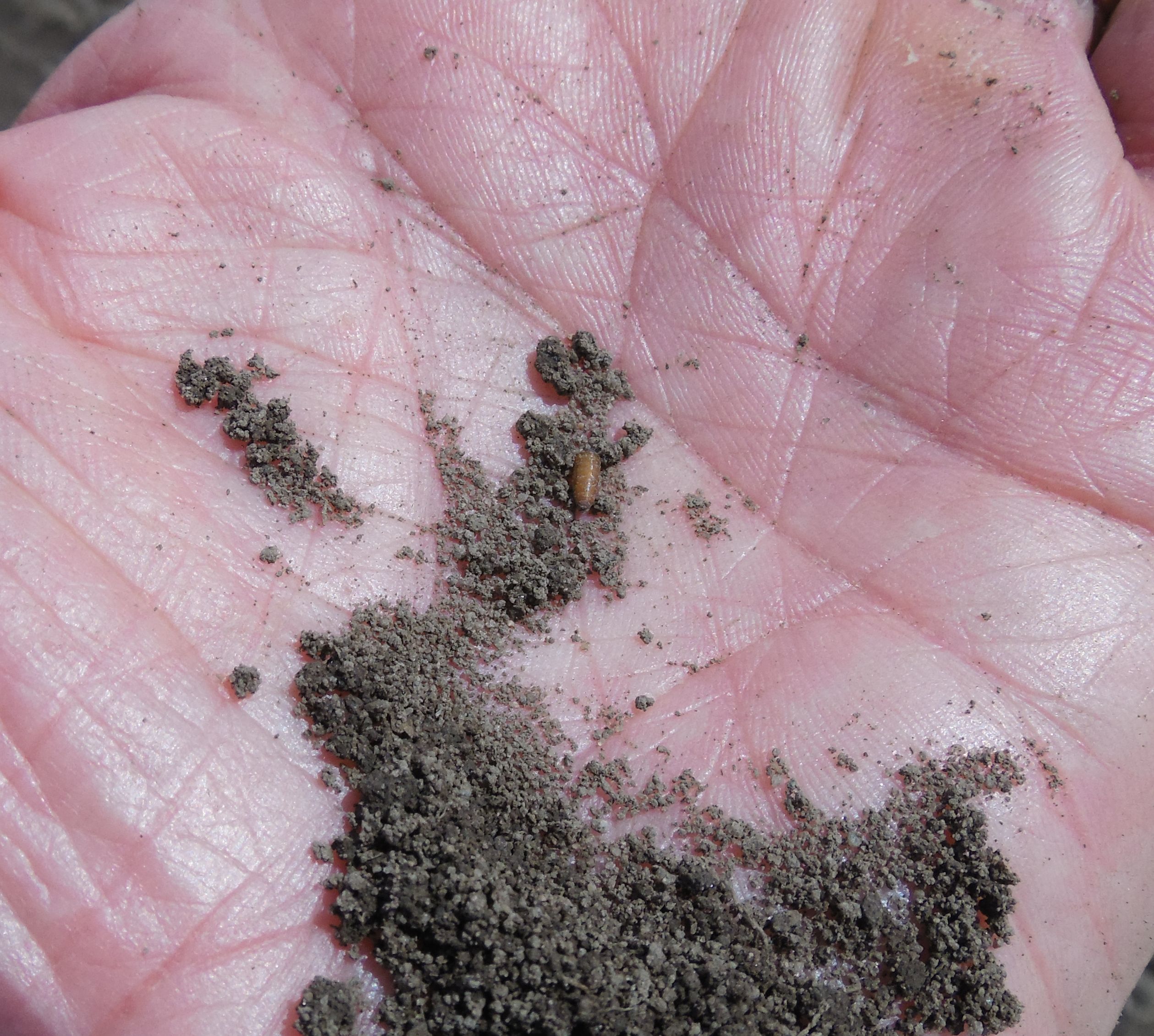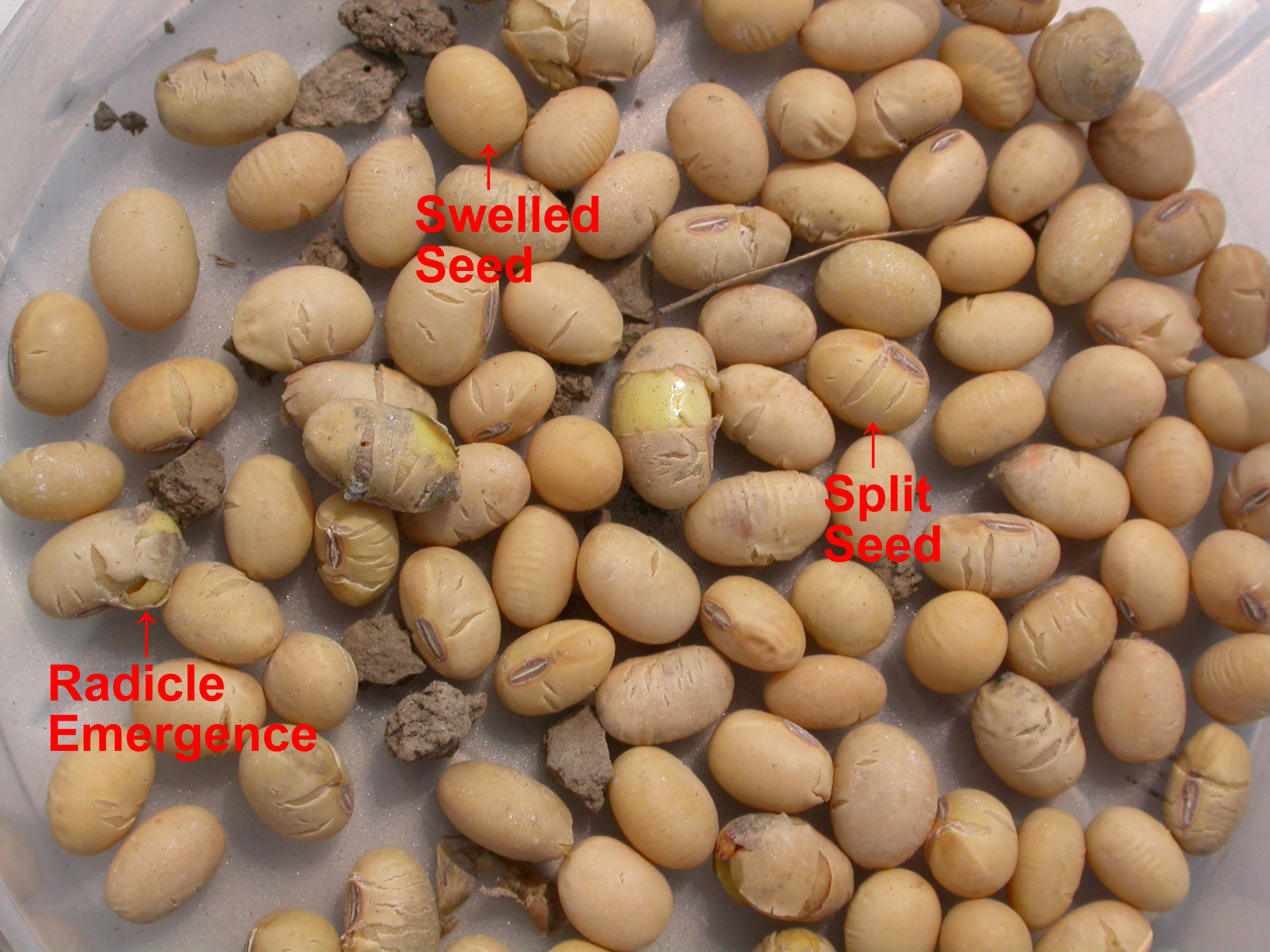Causes of variable and delayed soybean emergence
Understanding the causes of this year’s variable or delayed soybean emergence and estimating the viability of the seeds and seedlings will help producers manage affected fields.

There are several factors responsible for the variable and delayed soybean emergence that has occurred this spring. Seed corn maggots, soil crusting, poor seed-to-soil contact and dry soil conditions are the main culprits. Of these, dry soil is the biggest and most widespread problem and producers cannot address the issue unless they have capacity to irrigate. One thing soybean producers can do now is assess their stands and determine the cause of the delayed or variable emergence. This will also help determine if the seed or seedings are still viable.
Emergence problems due to soil crusting occurred this year even though we did not experience the typical conditions that cause it – heavy rain followed by sunshine and warm temperatures. If crusting was the main problem, plants that failed to emerge should have swollen and possibly bent hypocotyls and one or both cotyledons may have been torn off emerged plants.

Seed corn maggots may have been the culprit if the seed was planted into good moisture and crusting was not the problem. Look for emerged plants or plants that have not yet emerged that show feeding damage on the cotyledons. Most of the feeding was done a while ago so you probably will not see the maggots. However, if you see the damaged cotyledons, dig around and you should find the pupal stage (Photo 3) in the soil if seed corn maggots contributed to the poor emergence.

If you suspect dry soil conditions are responsible for uneven or delayed emergence, dig up and inspect the seeds to determine if they are still viable. If the seed coat is not cracked or split, the seed has not lost any potential to germinate and will germinate as soon as the field receives around 0.5 inch of rain. This is true even if the rain occurs two to three weeks from now. If the seed coat is broken, no sign of the radicle (root) is visible, and the seed dried to 10% moisture, germination will probably be reduced by 35 to 40% when the soil rewets. If the radicle is visible and the moisture in the seed dropped to 10%, the seed is most likely no longer viable. Shawn Conley discusses this in more detail in the following article: Variable Germination and Emergence In Soybean: Which Seeds are Still Viable?

The long-standing recommendation for planting soybean seed into at least 0.5 inches of moist soil is proving true this year as most of the fields that were planted prior to the dry soil conditions had enough soil moisture to germinate and produce uniform stands. The plants in these fields should tolerate moisture stress relatively well up to flowering. Moisture stress to emerged soybean plants reduces shoot growth, but not root growth. These conditions diminish water use by the plants and increase their ability to extract water from deeper in the soil profile. Planting early into good soil conditions is a recommended tactic for mitigating the adverse effects of moisture stress throughout the growing season. This is because the plants will have deeper roots for extracting soil moisture and a larger crop canopy, which shades the soil and reduces soil moisture losses due to evaporation.
For the most part, early planted soybean fields have emerged well and should tolerate the warm and dry conditions predicted for the rest of the month. However, fields that were planted later in the season and have not yet emerged or have variable emergence have a less certain future and producers should assess the viability of the seeds in these fields.



 Print
Print Email
Email